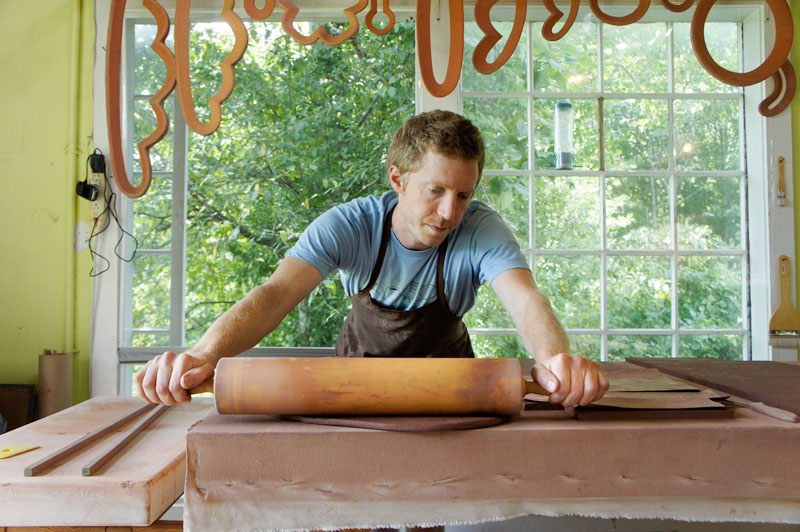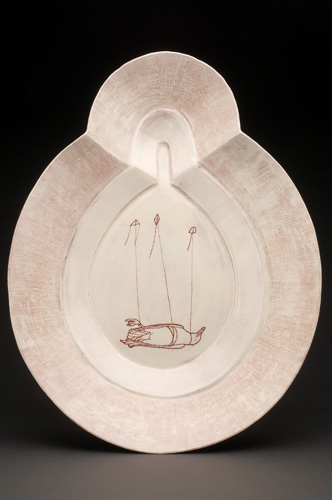This August Elisa Di Feo taught Dinner Plans, a clay workshop where students created functional porcelain tableware with culinary expression in mind. The workshop culminated with a dinner at Spruce Pine’s Knife and Fork restaurant, where chef Nate Allen cooked and served a meal that the students had considered, designed, and constructed dinnerware to hold. The evening was documented by Dot Griffith, a student in Alida Fish and Jeannie Pearce’s photography workshop, and Dot shared the photographs above with us.
About the workshop, Elisa wrote:
Our class was so interesting because it allowed each individual to consider the meal designed by Nate, make dishes based on the techniques I presented (simple molds, simple surfaces), and then eat off the dishes. With the direct parameters of The Dinner in mind, it was easy to communicate personal ideas about pottery and eating with each other, while exploring and discovering some new possibilities. The best quote came from my student Irene while in the midst of glazing some pots. She said that she wanted them to be like “super nothing.” This idea of “super nothing,” I think, comes out of suggestions to keep it simple and considered in terms of surface designs and shapes.
Participants in the class included Robert Bell, Stormie Burns, Irene De Watteville, Benjamin Friedman, Betsy Gray, Ted Gross, Maggie Johns, Adria Katz, Marsha Kitowski, studio assistant Rob Kolhouse, Will Lentz, Ann Lynch, Jodie Masterman, Claire McCarty, Elizabeth Mueller-Roemer, Nina Otterness, Laura Schofield, and Sophie Southgate.


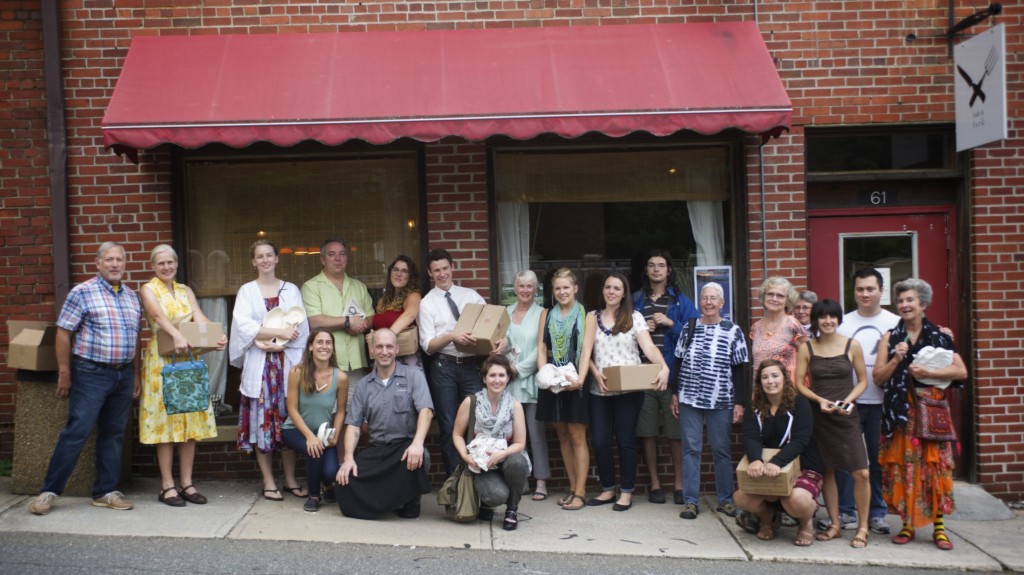
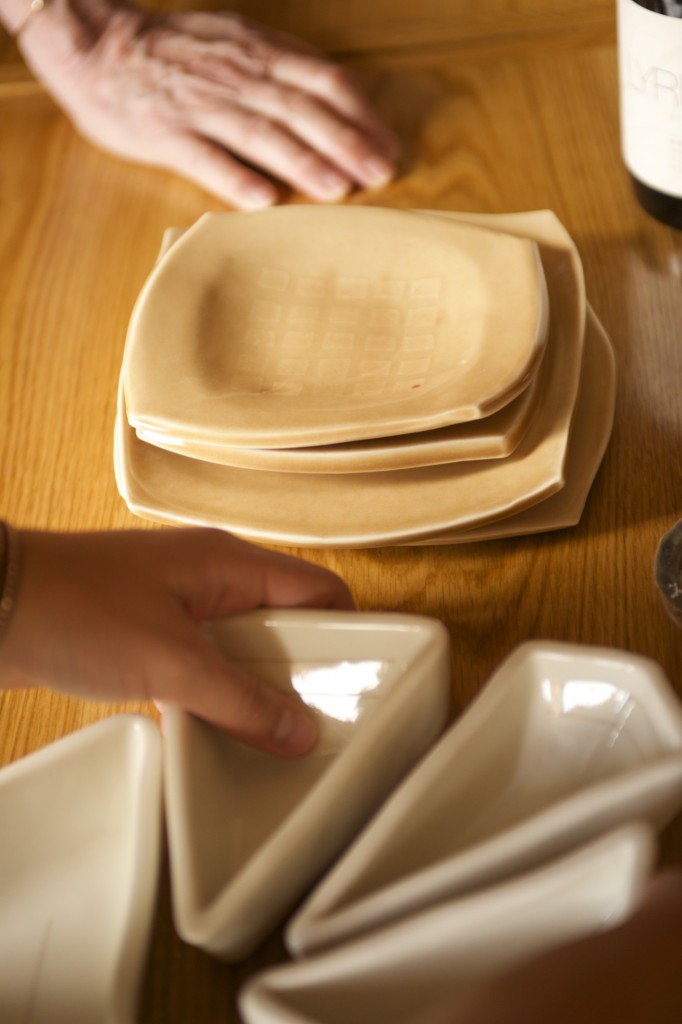
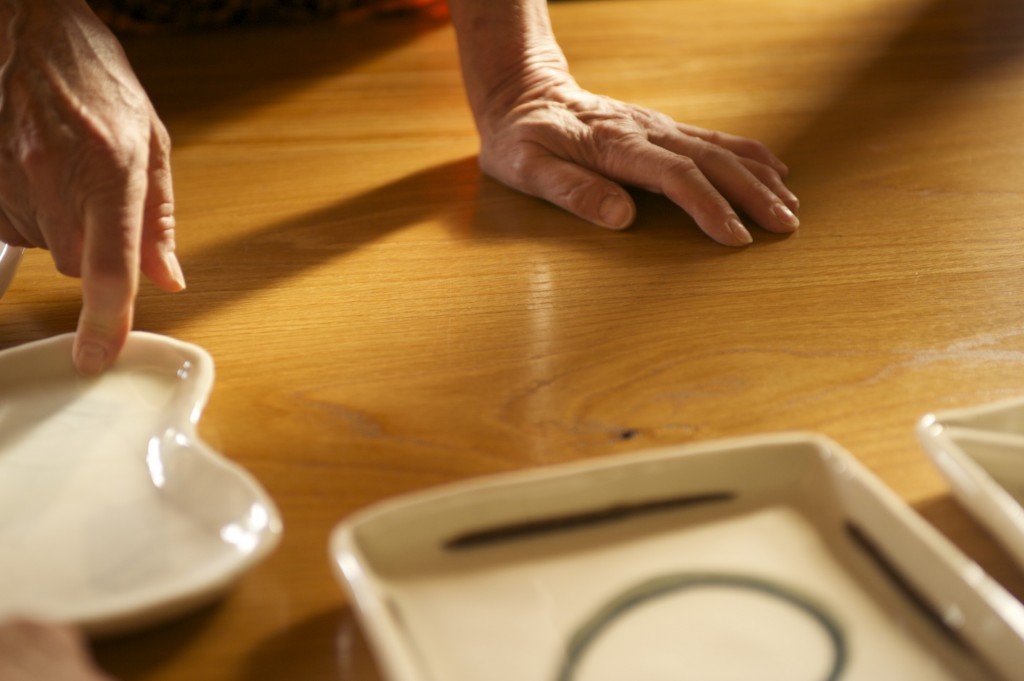
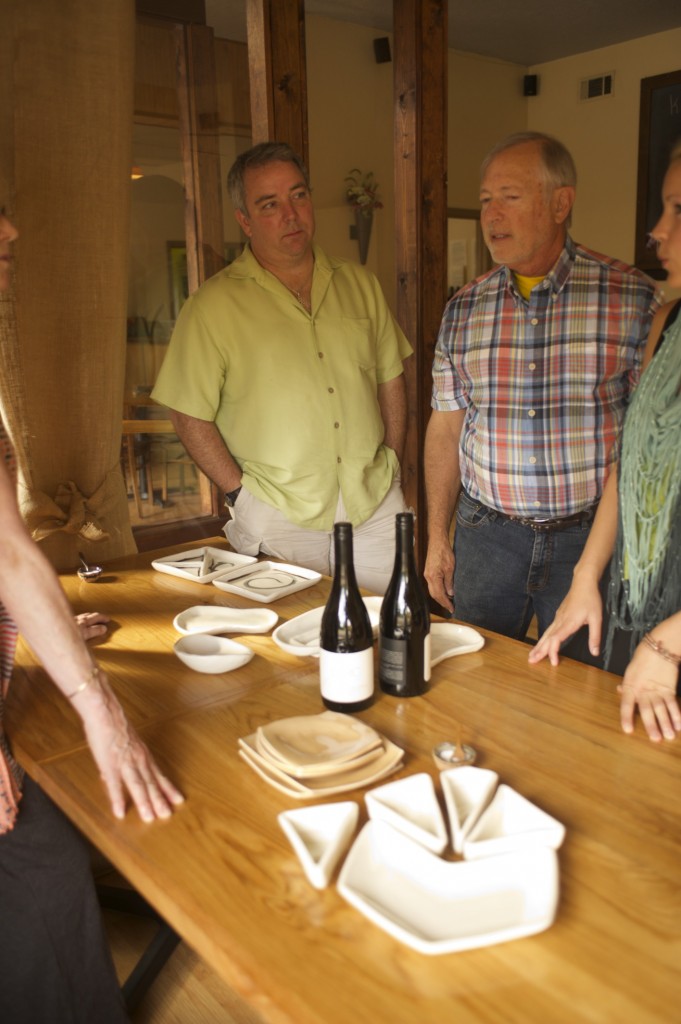
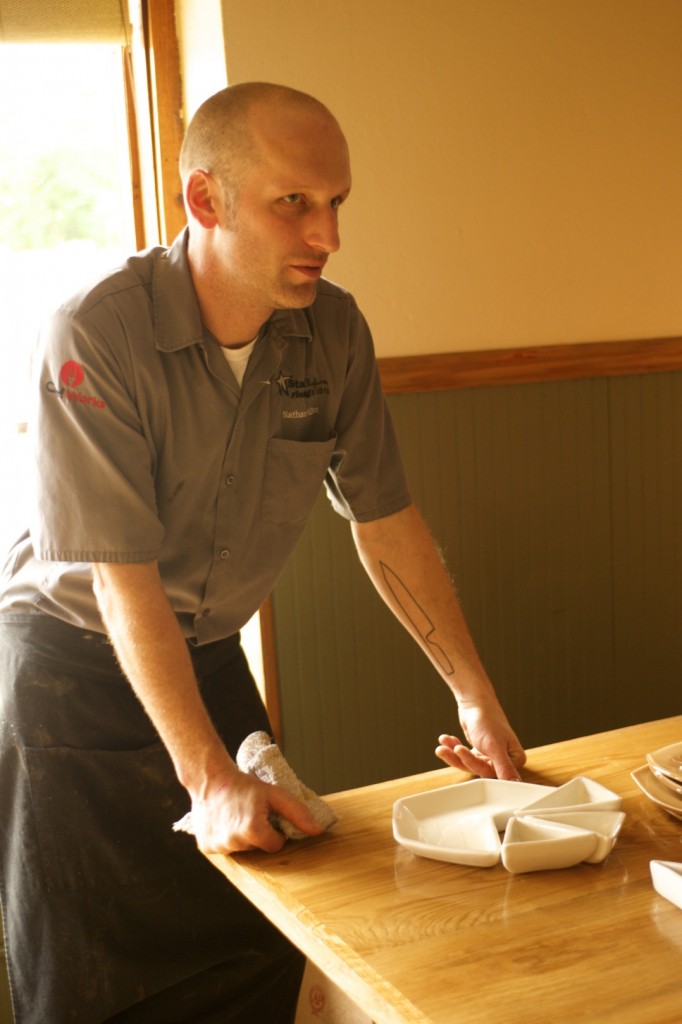
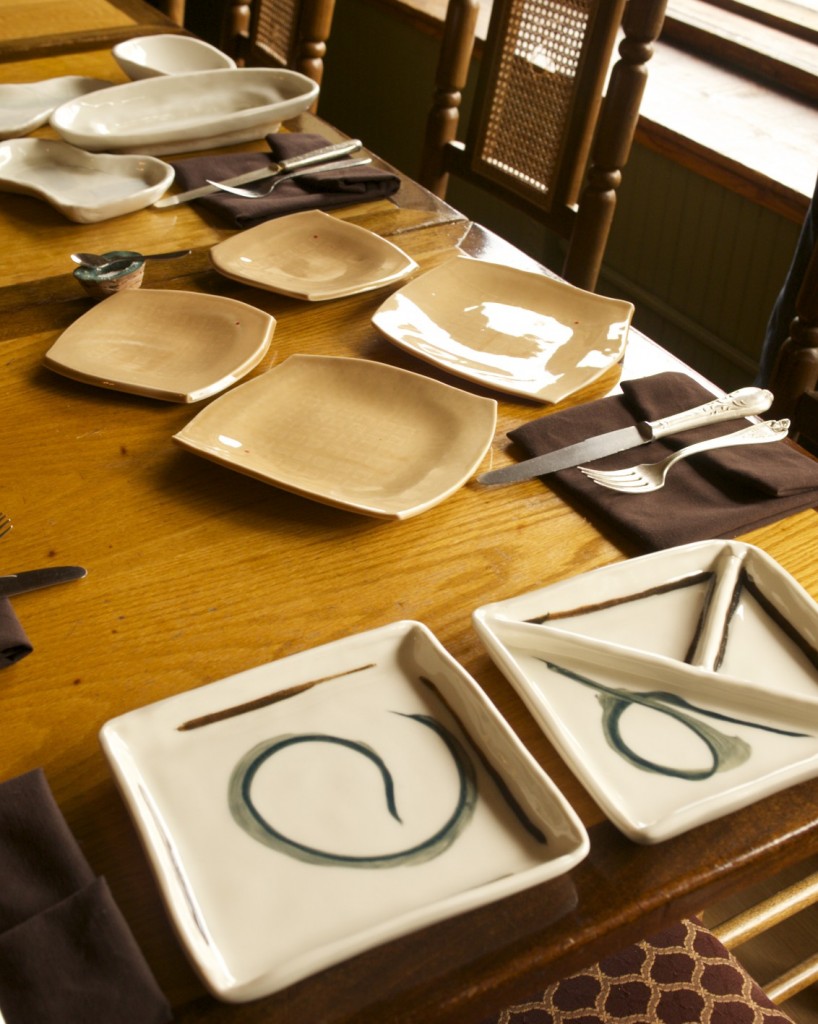
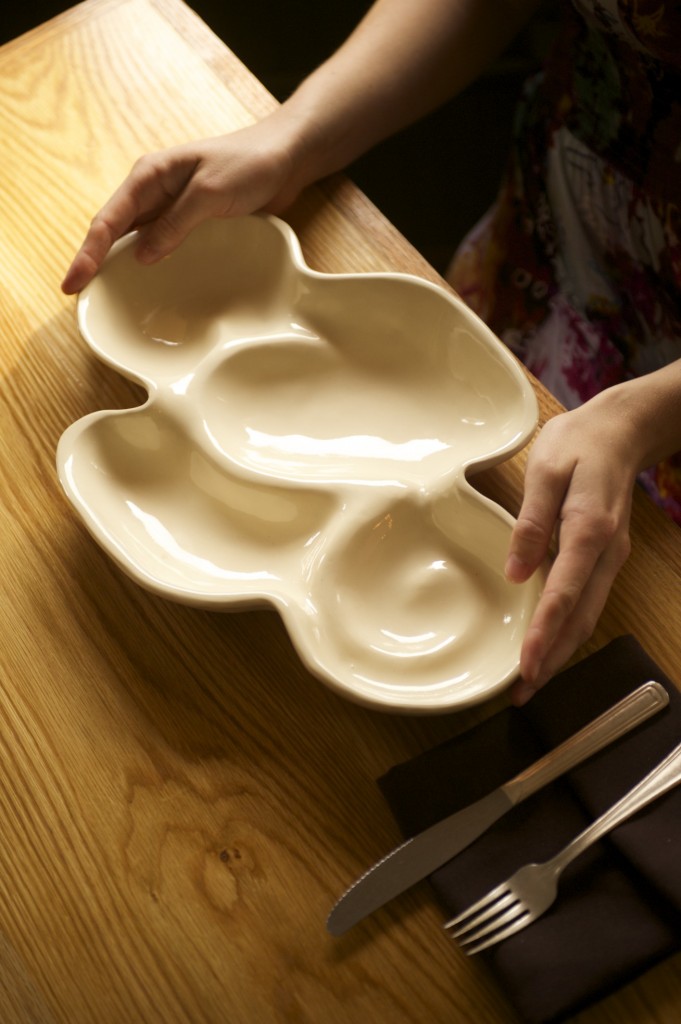
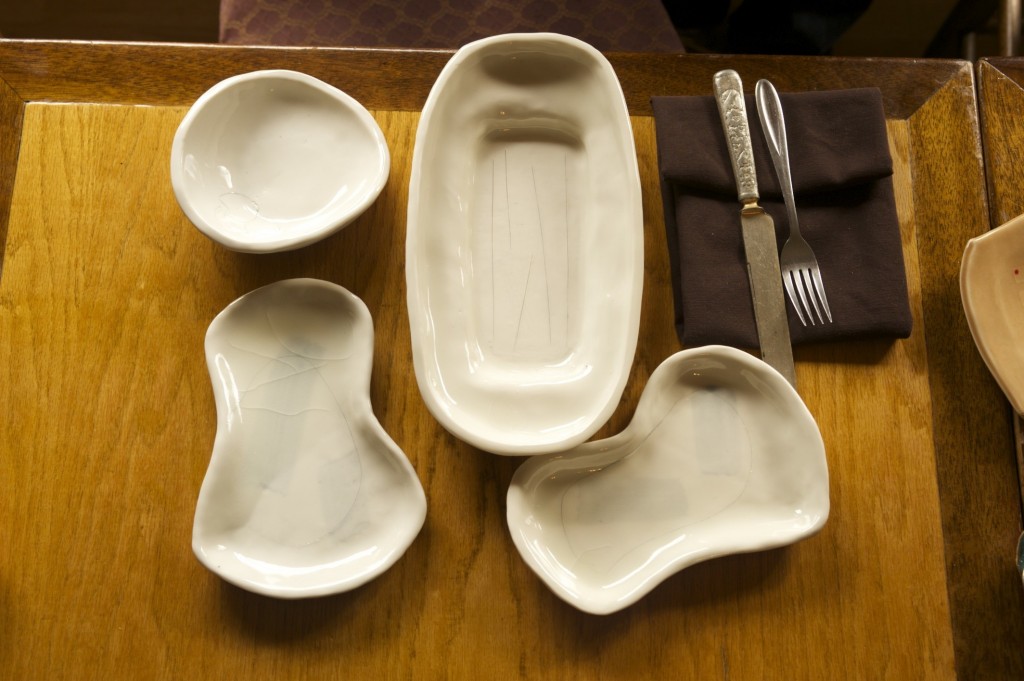
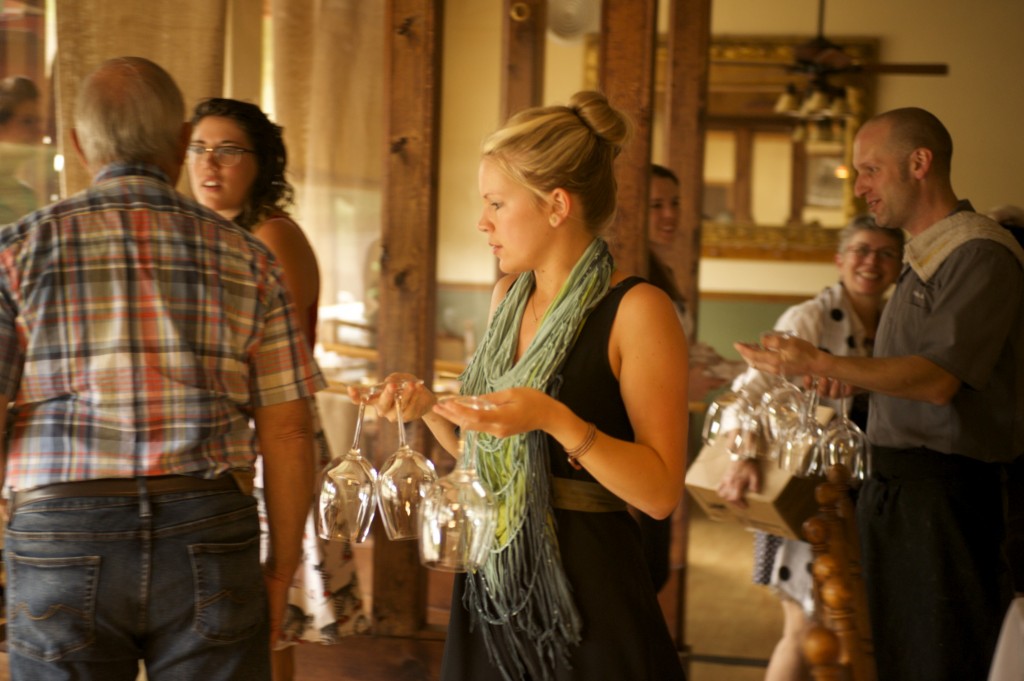

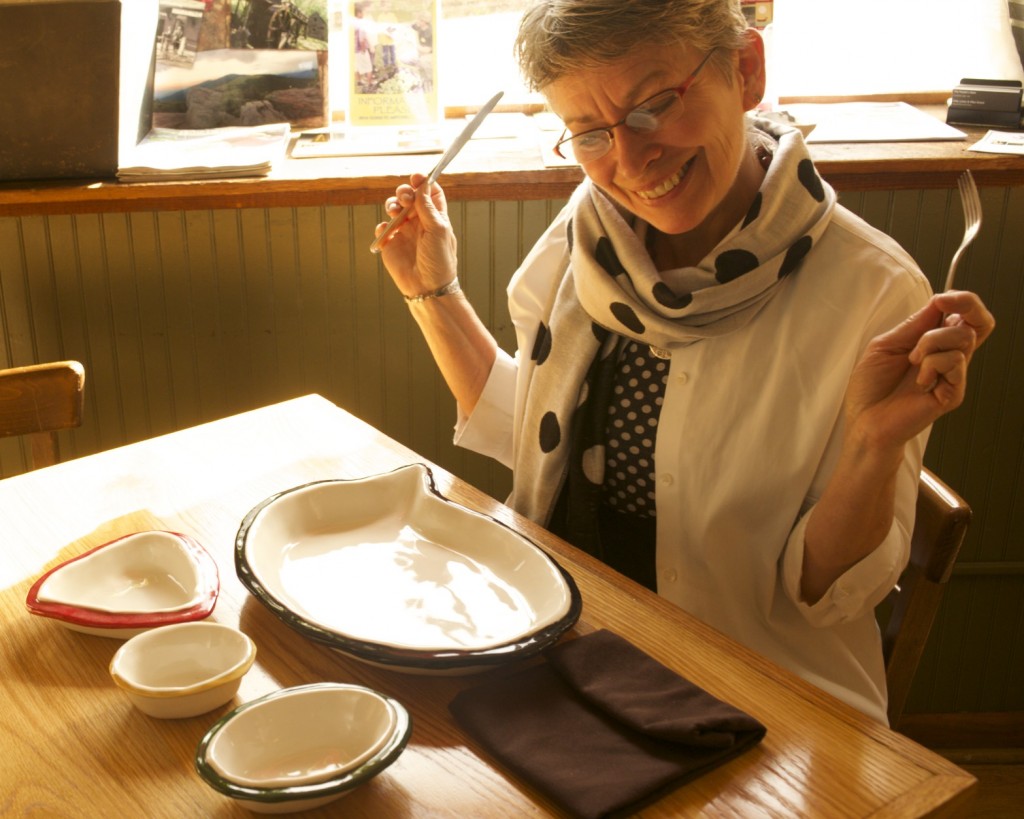
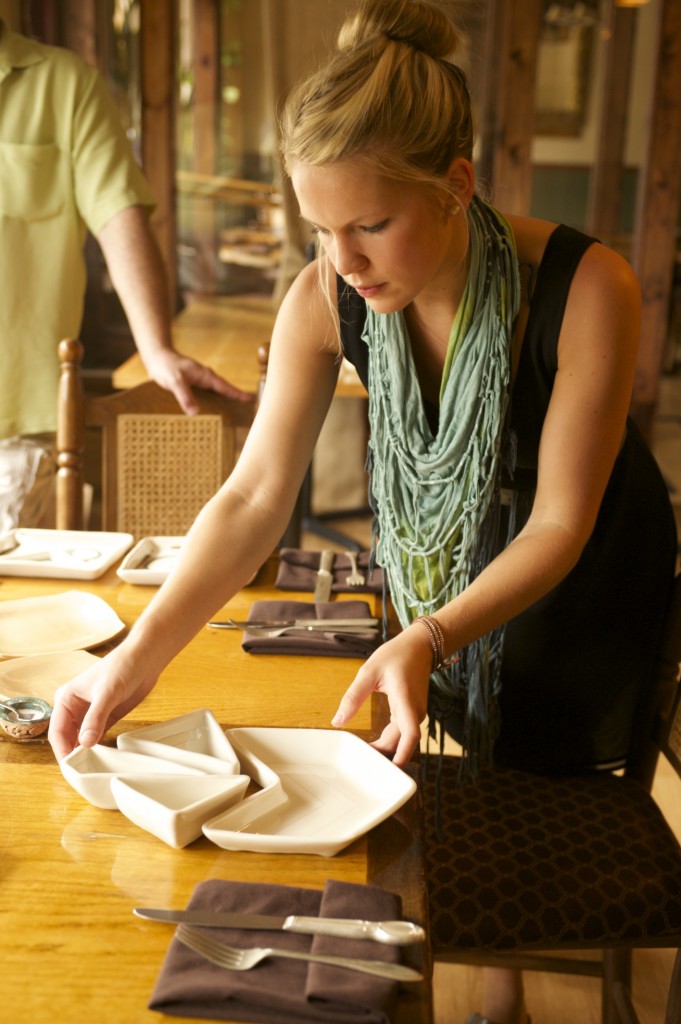
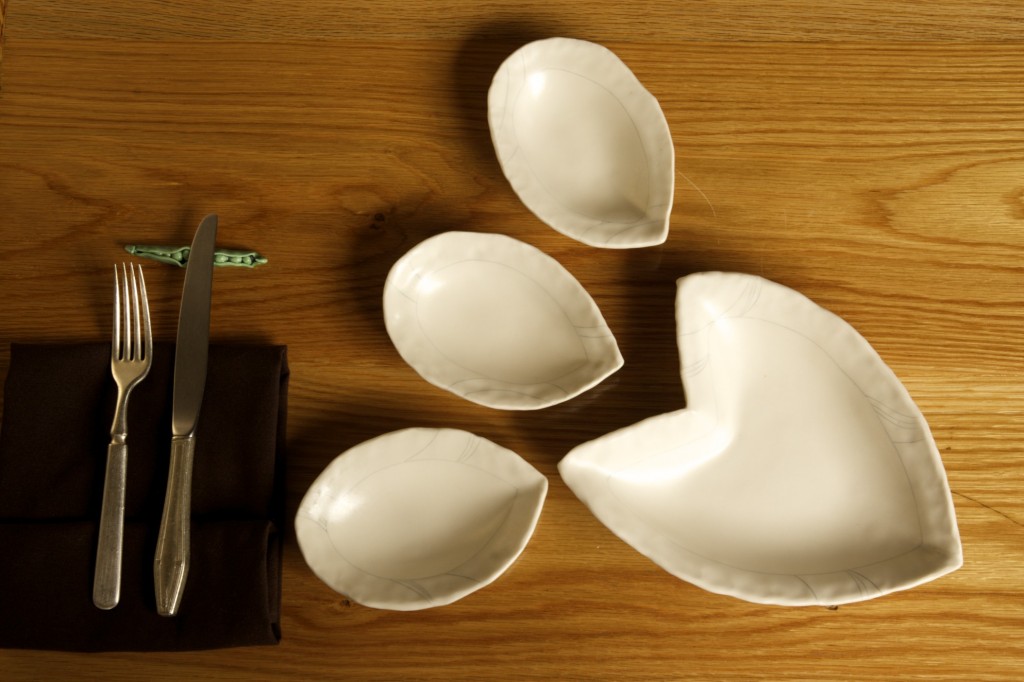
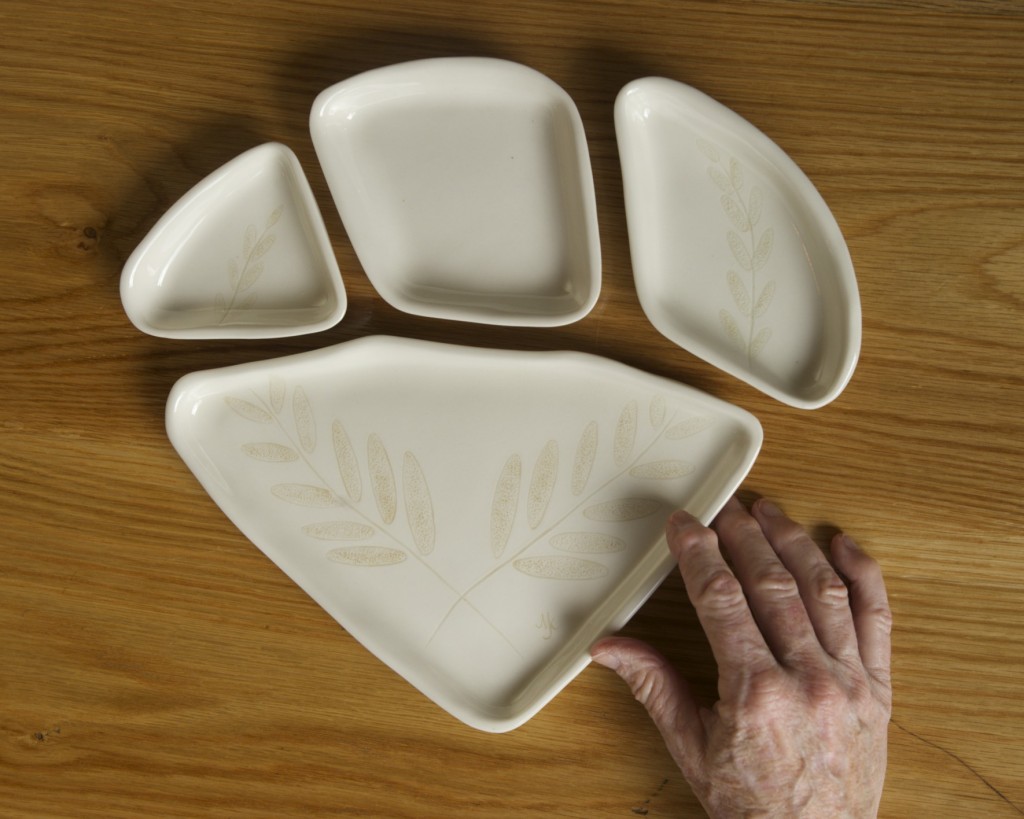
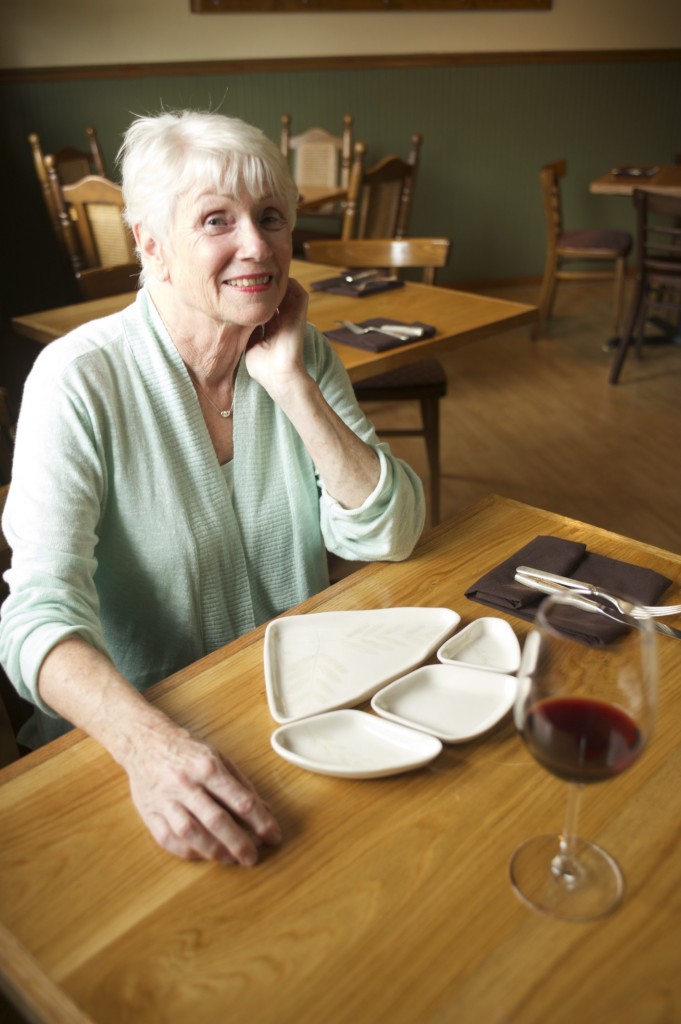
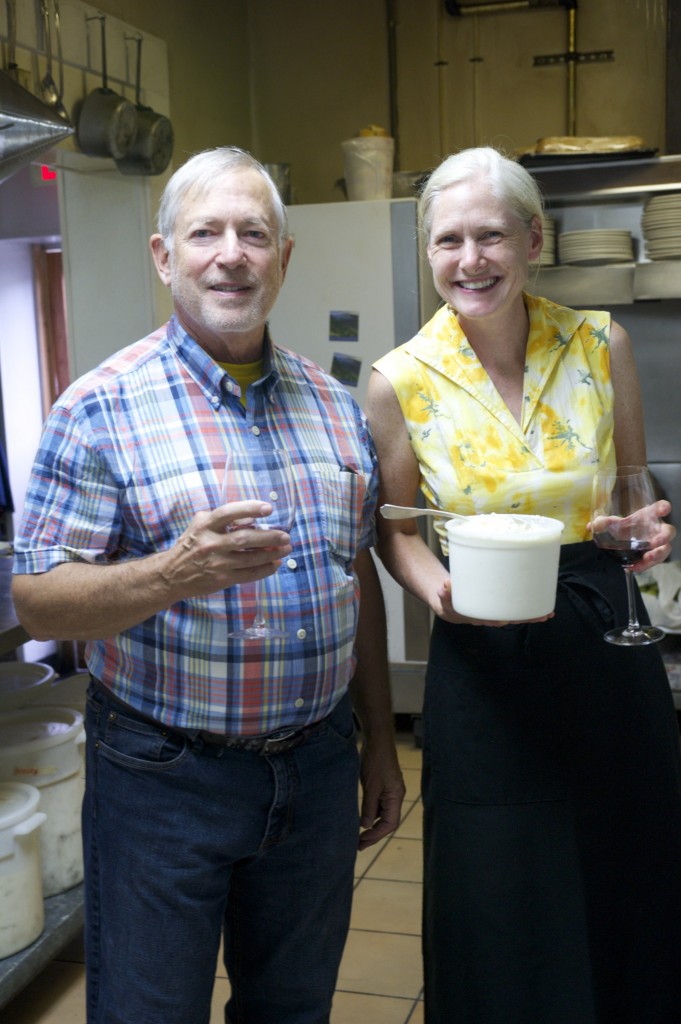
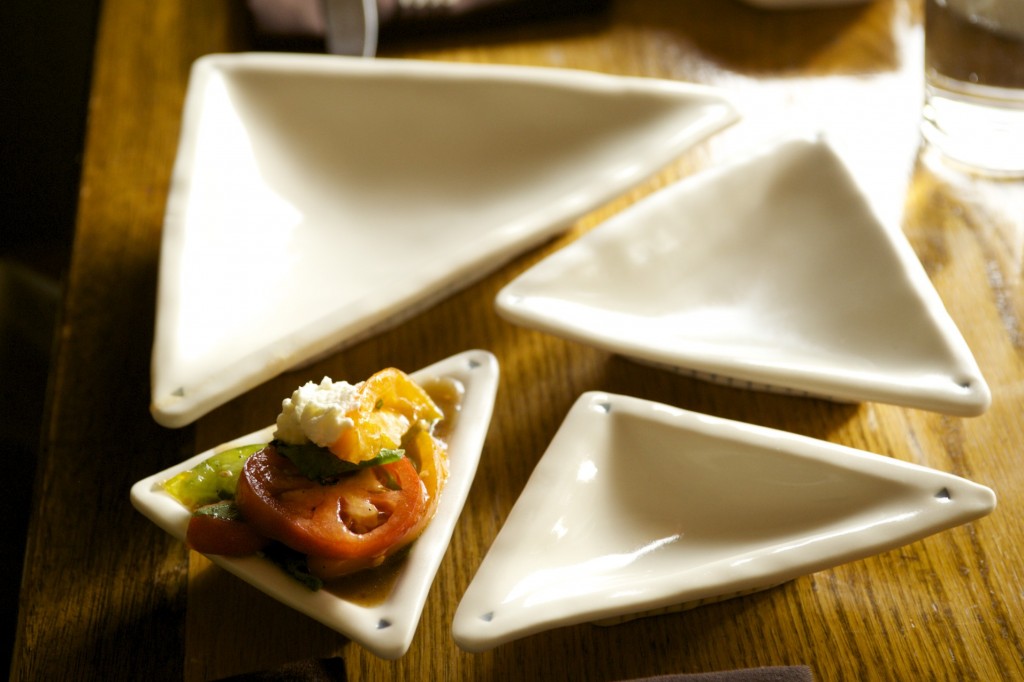

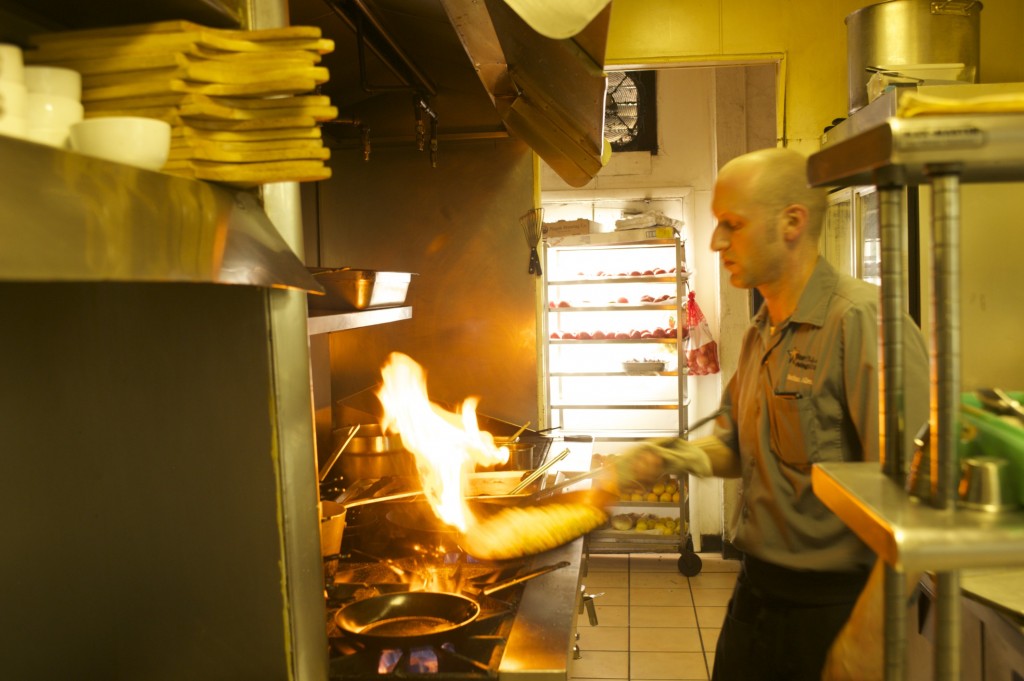
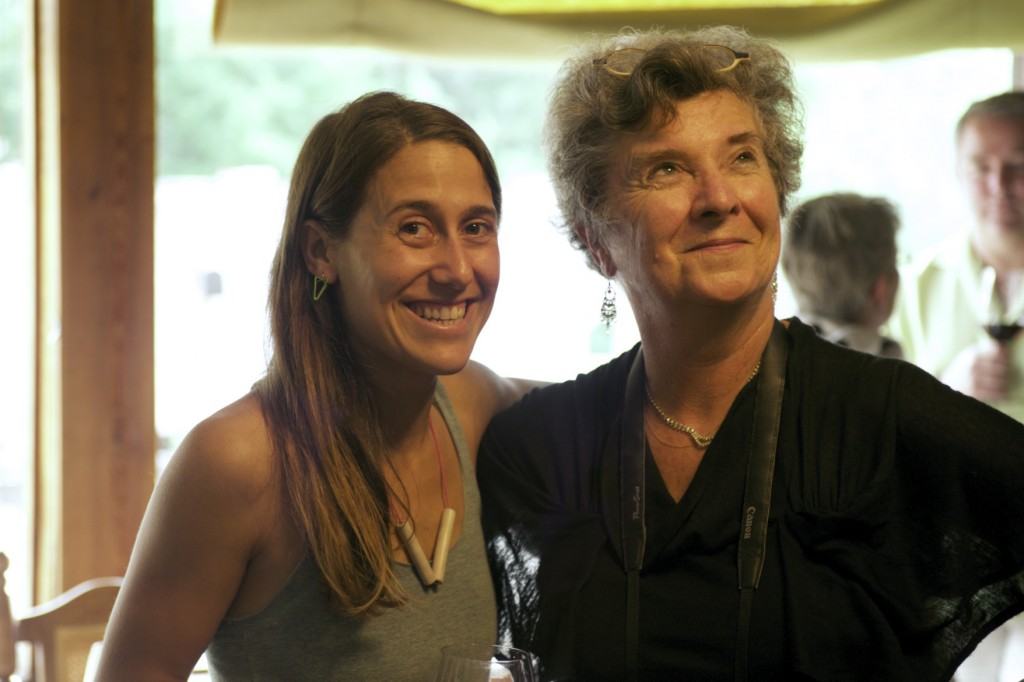
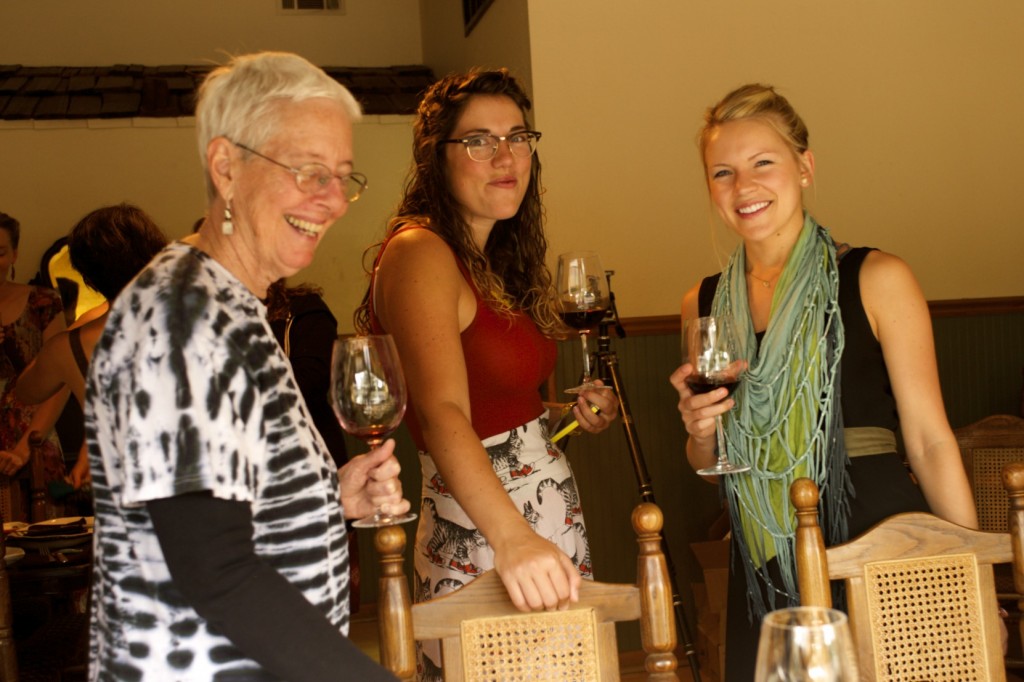
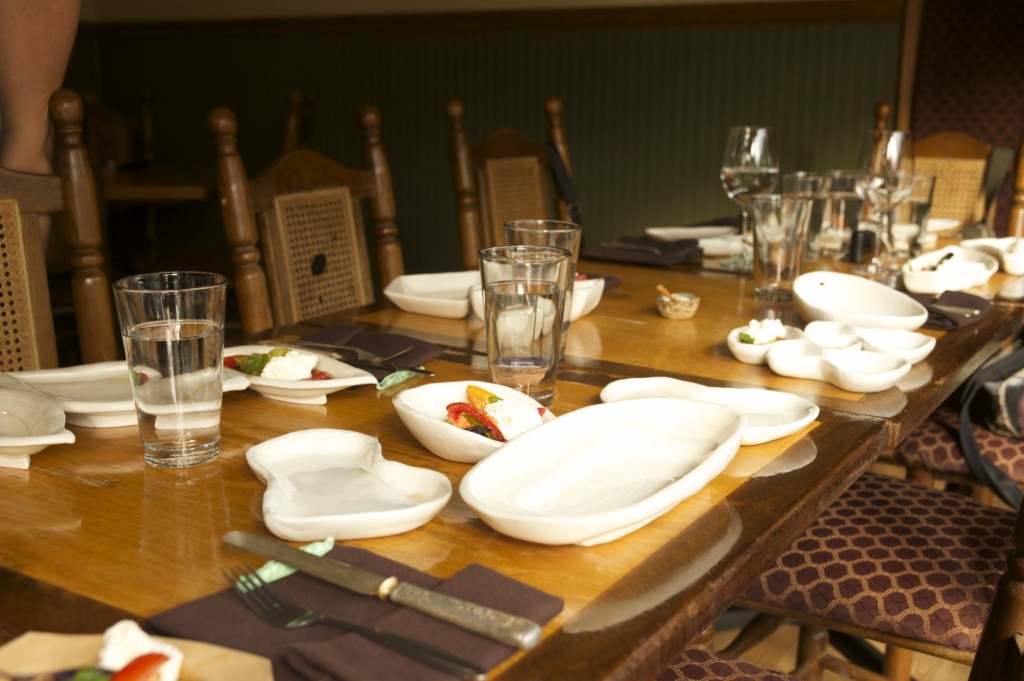
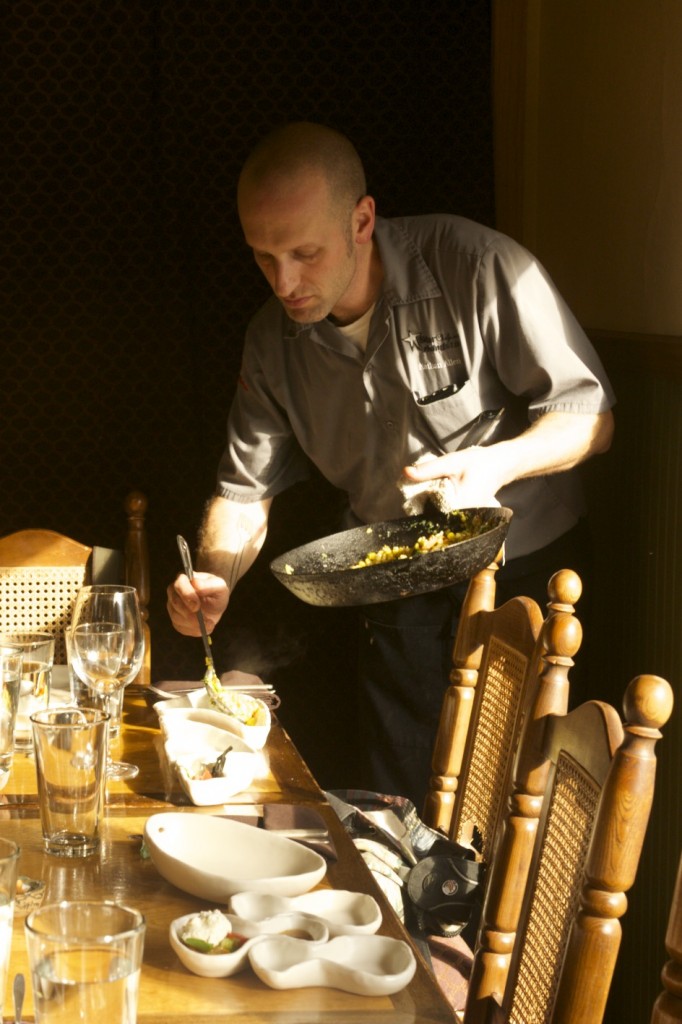
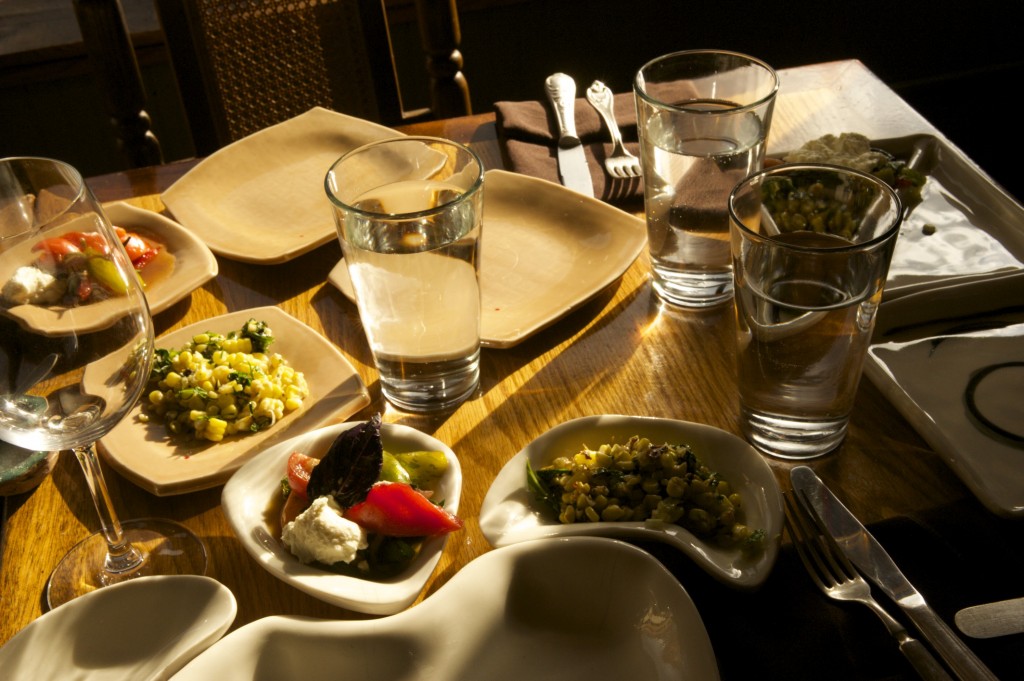
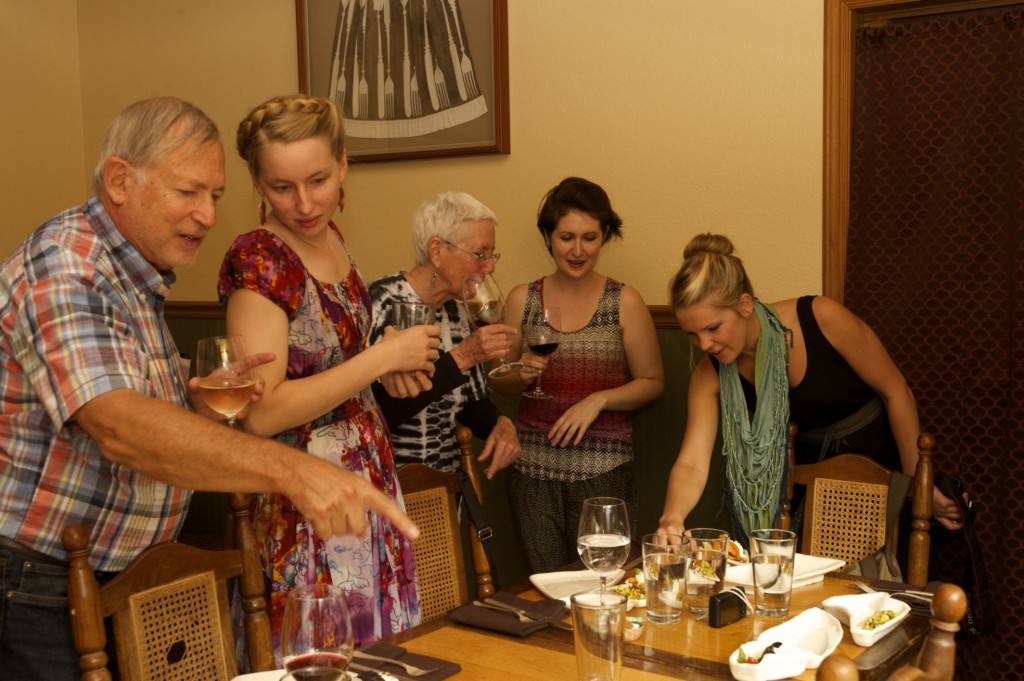


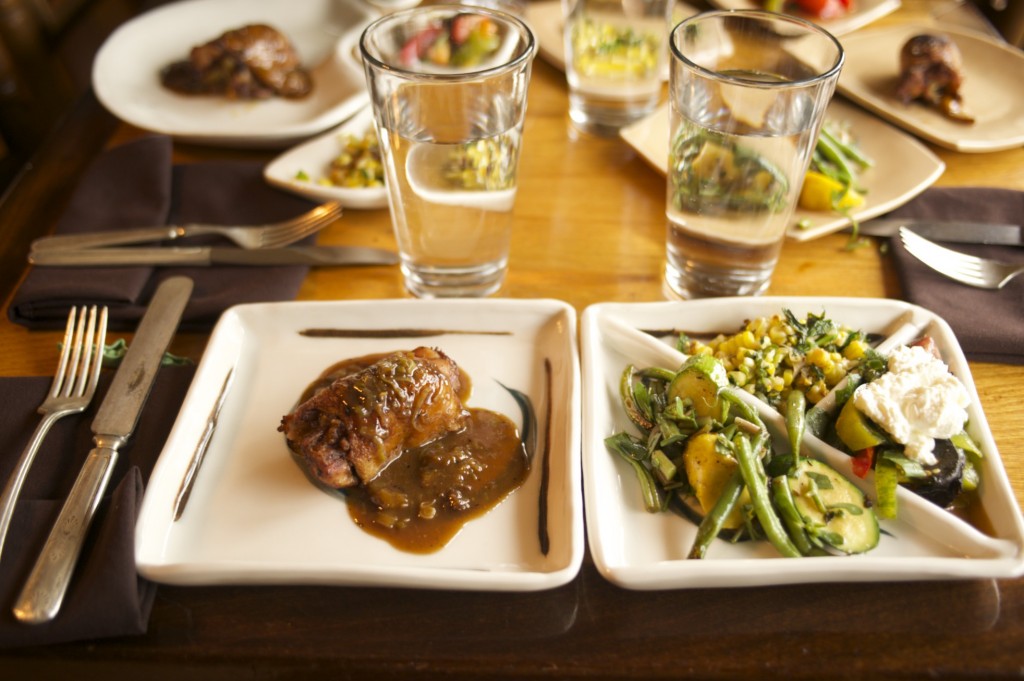
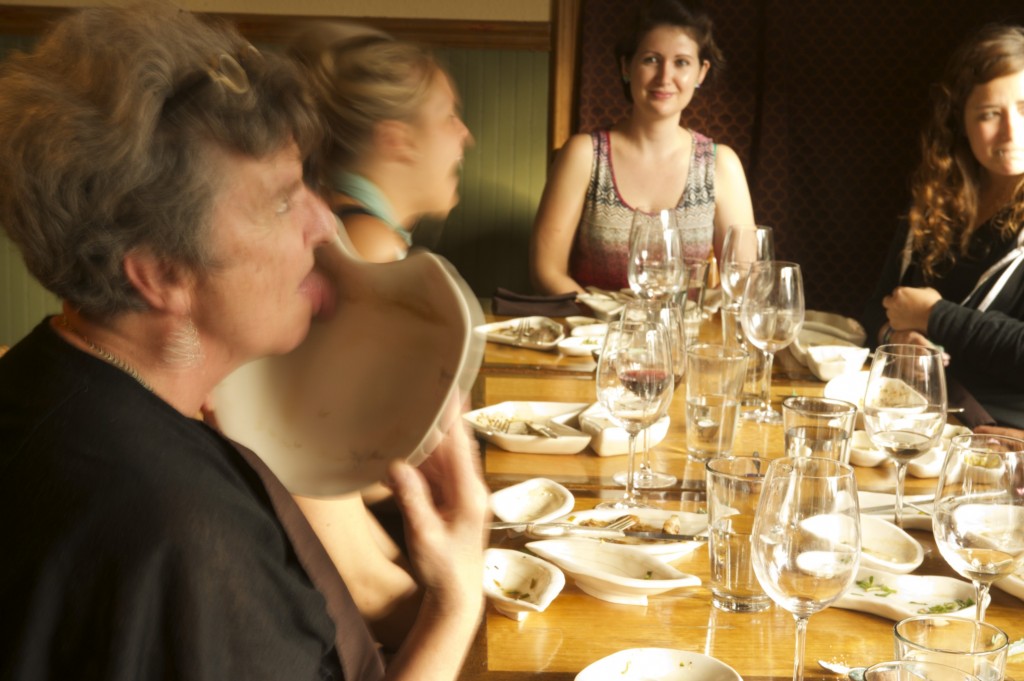
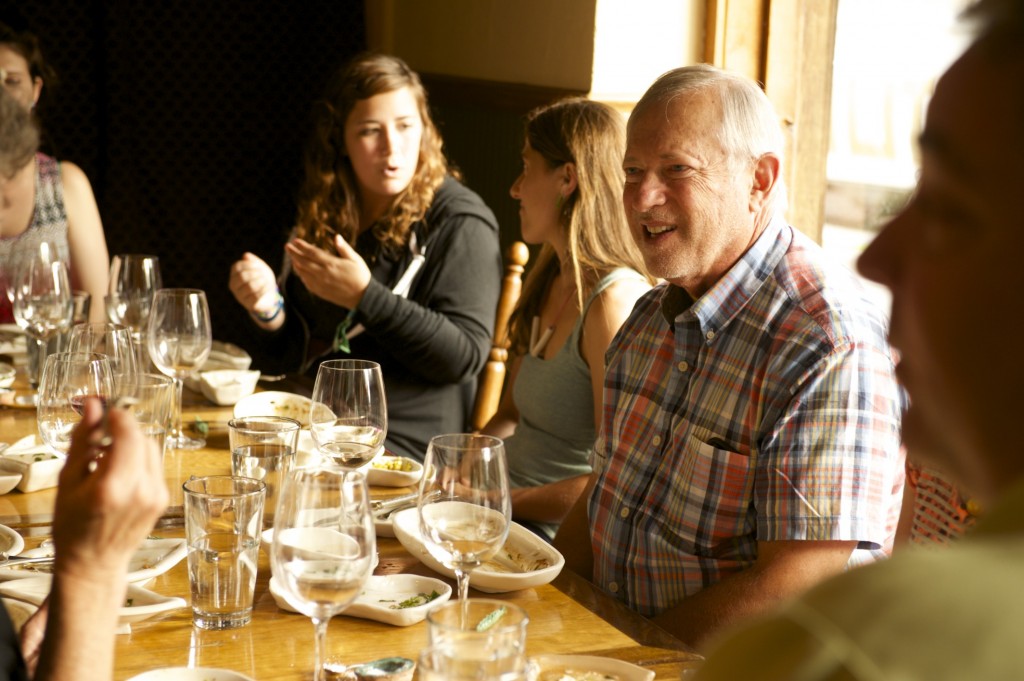
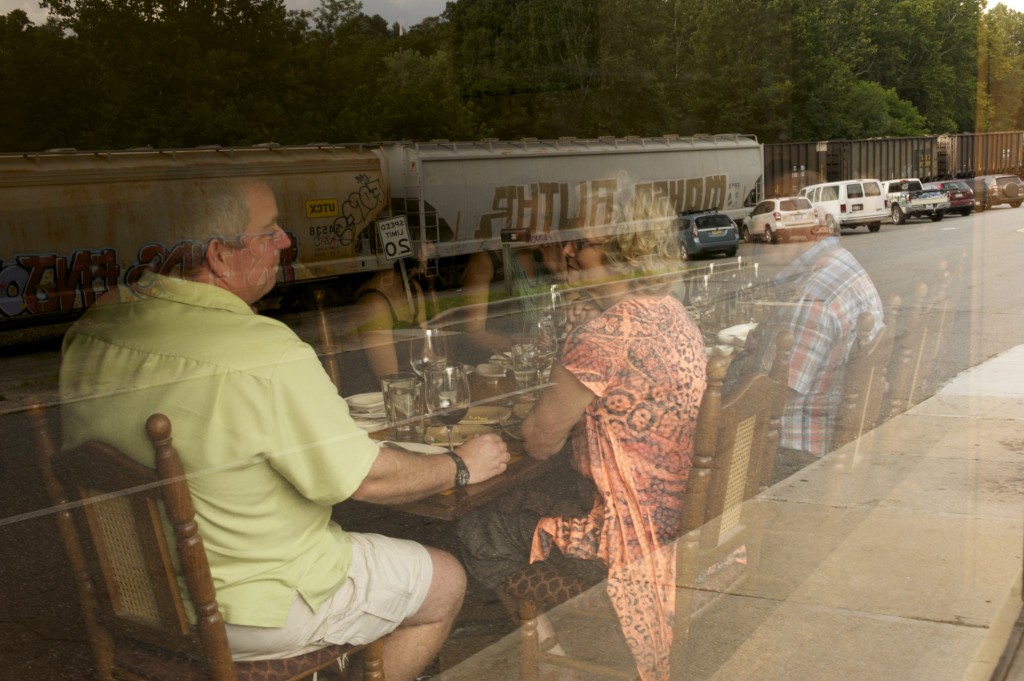
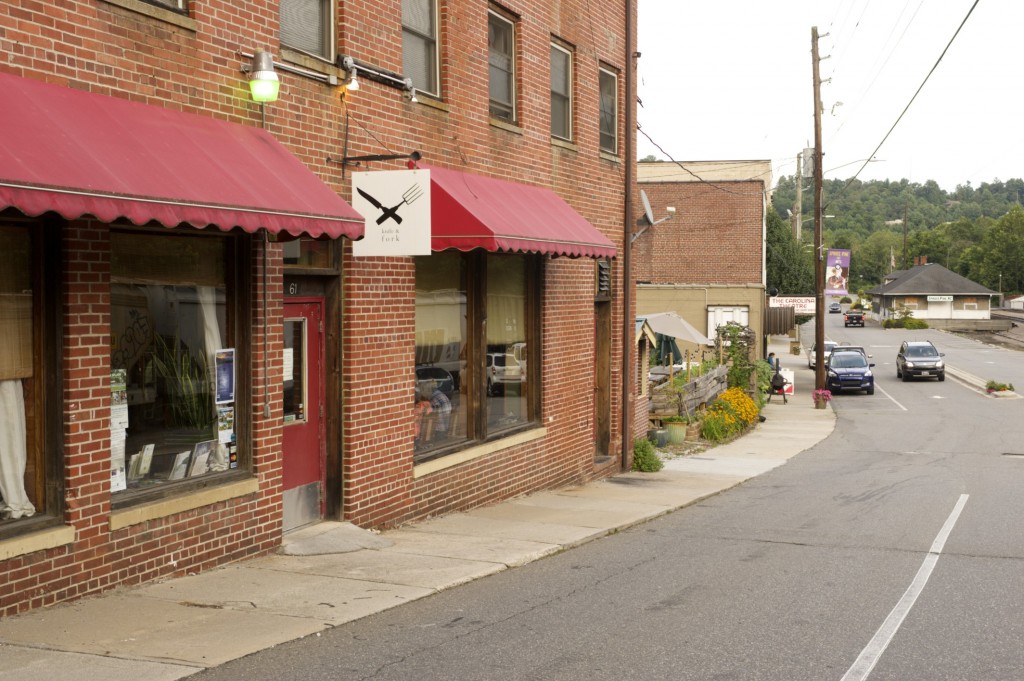
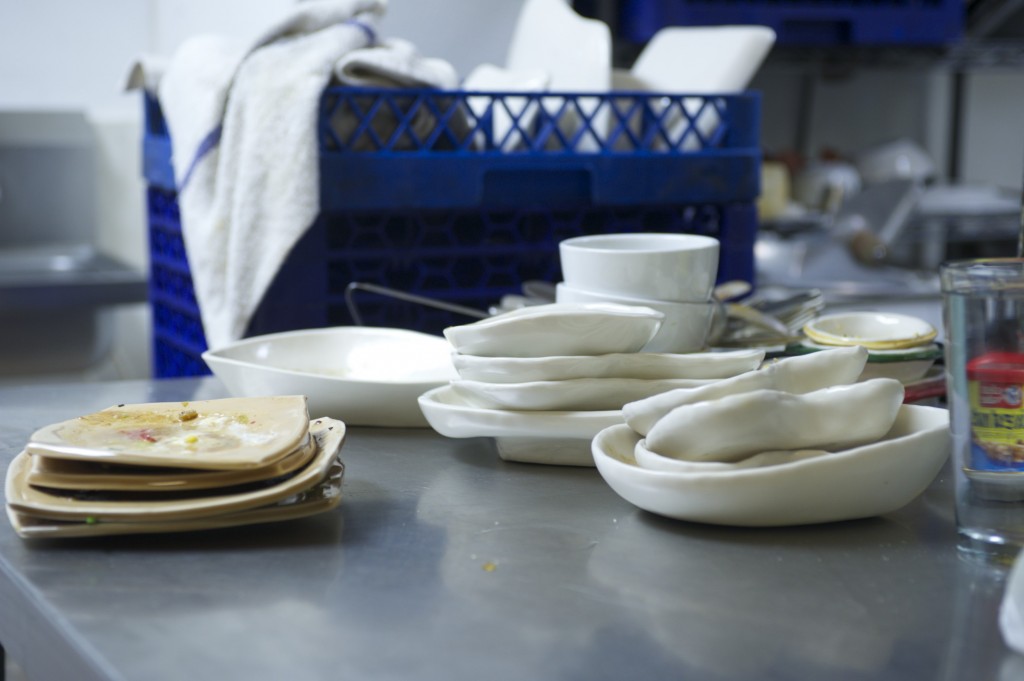
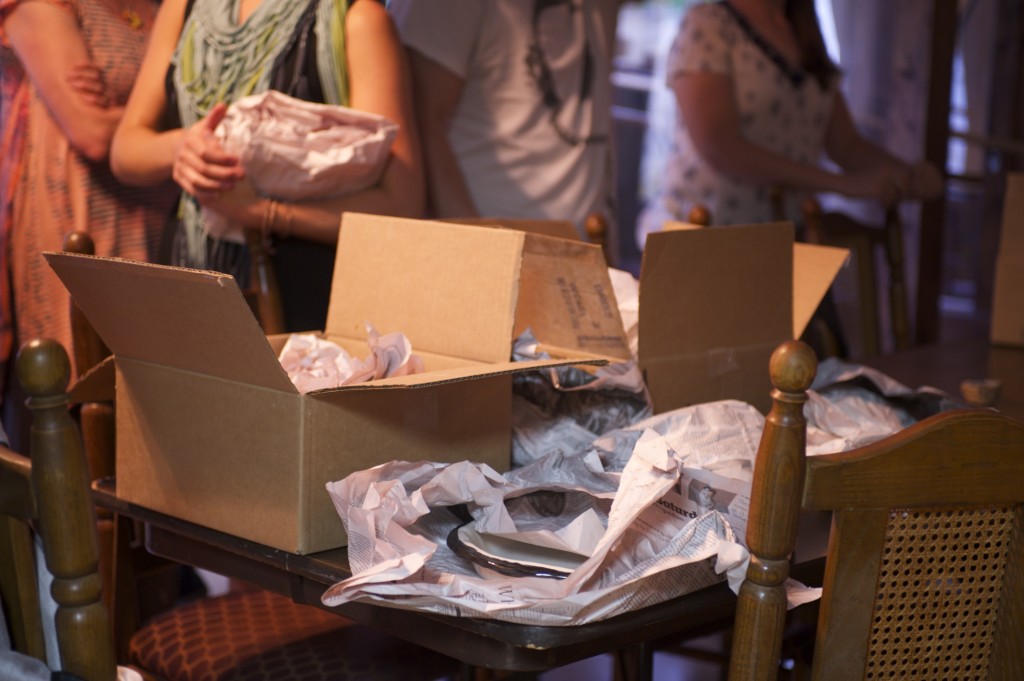
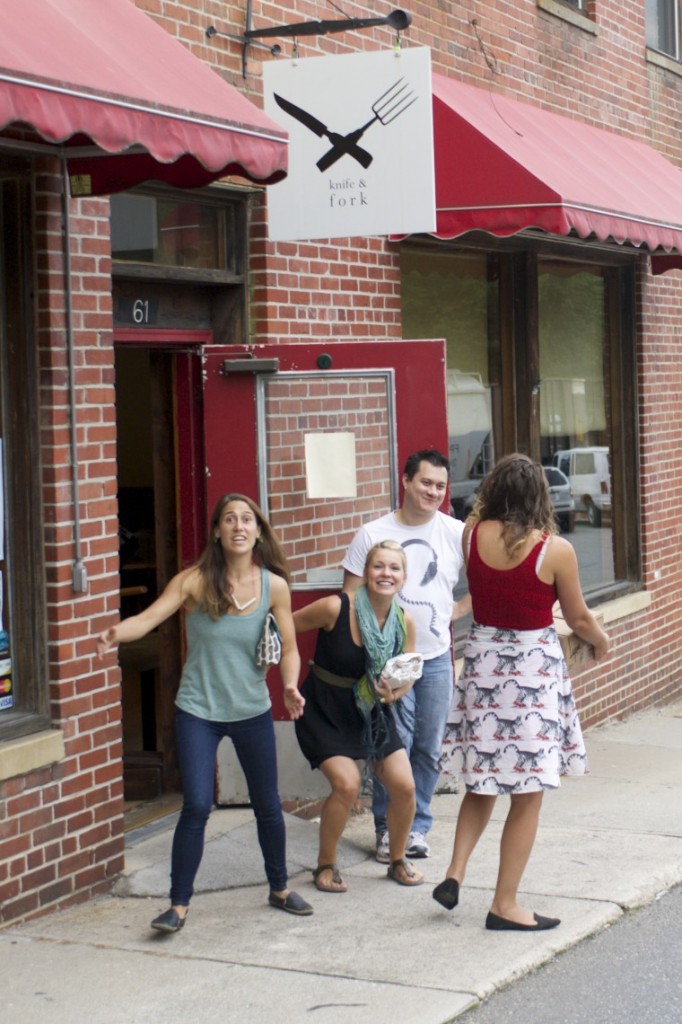

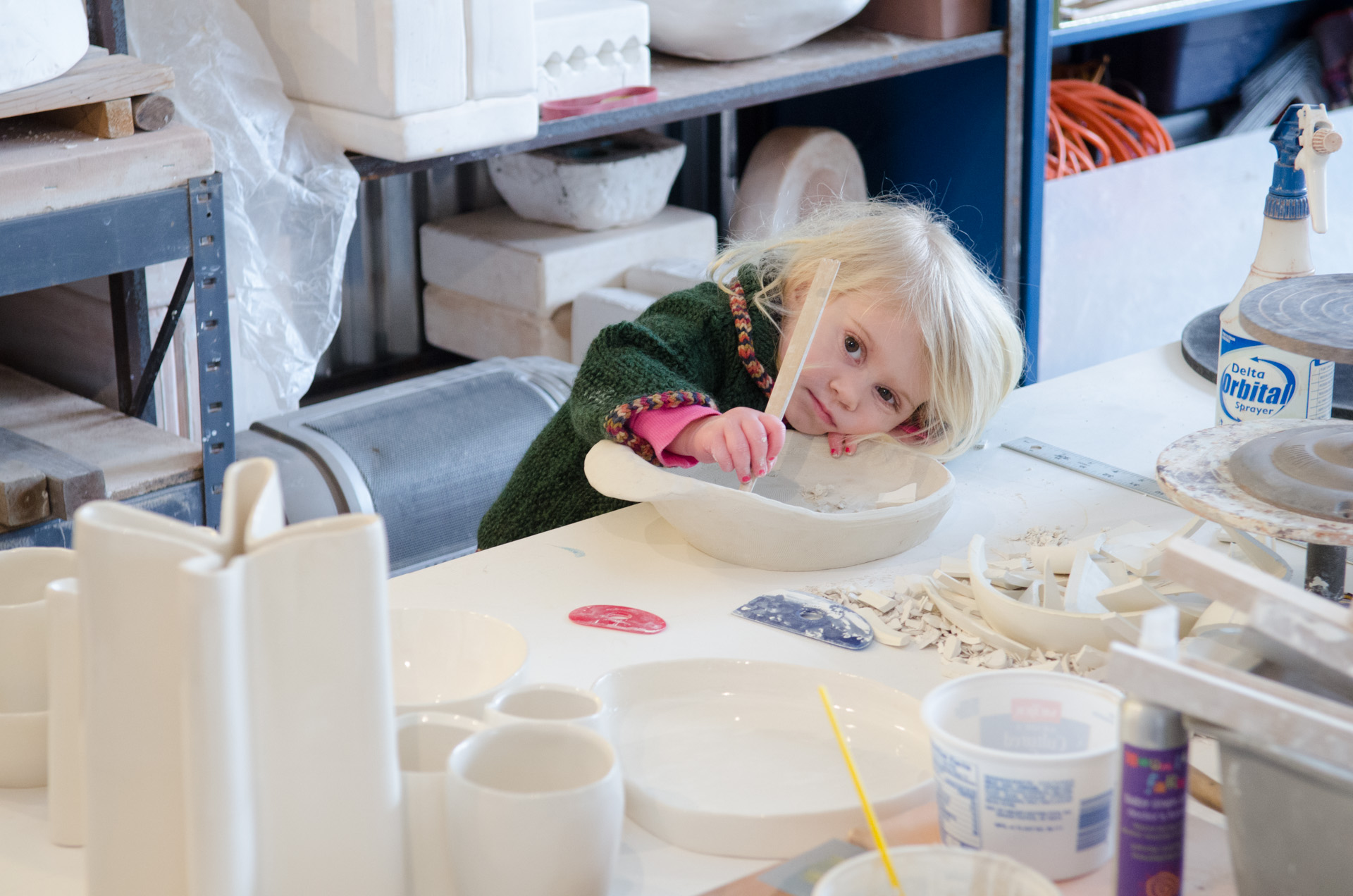
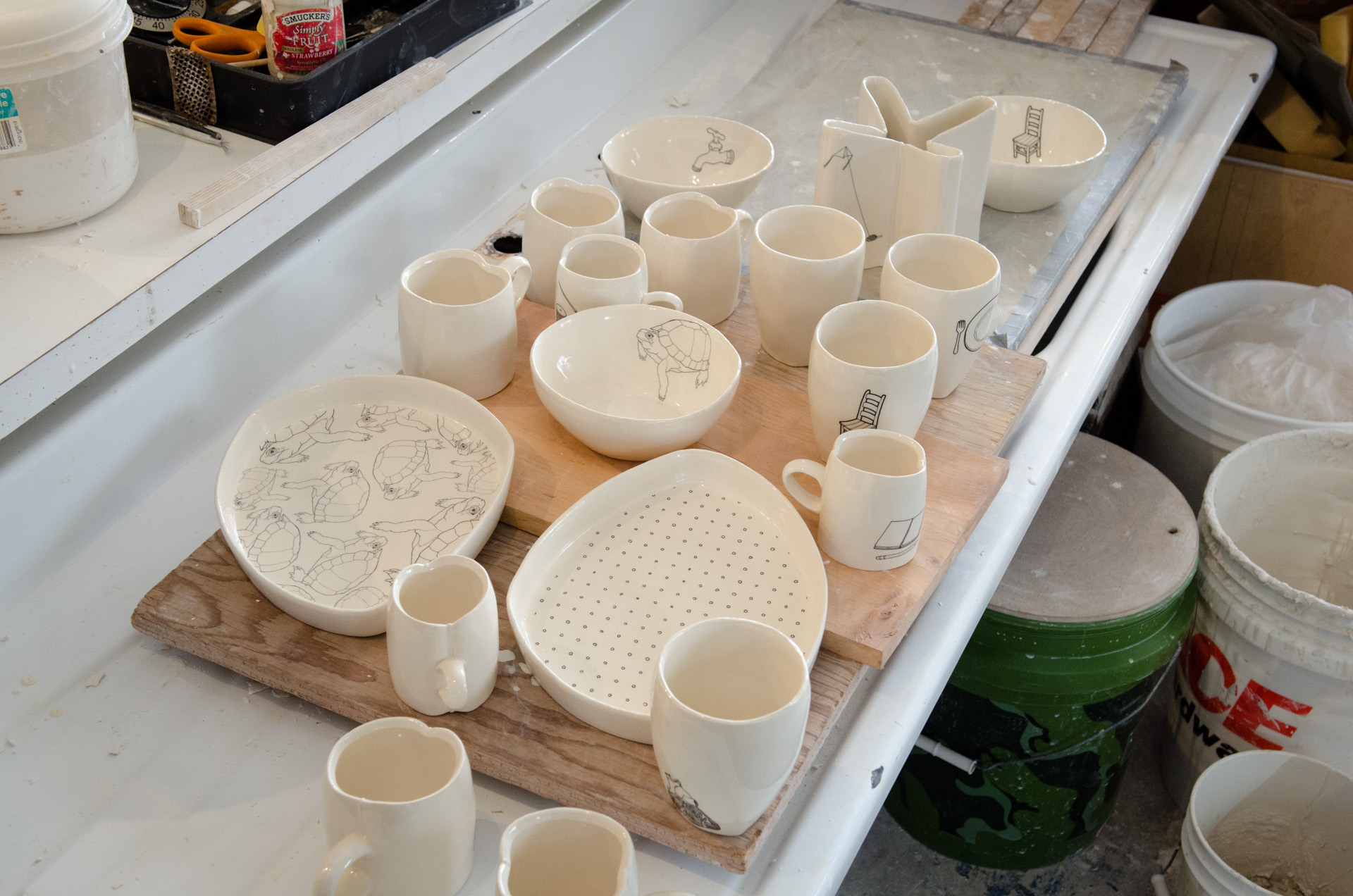
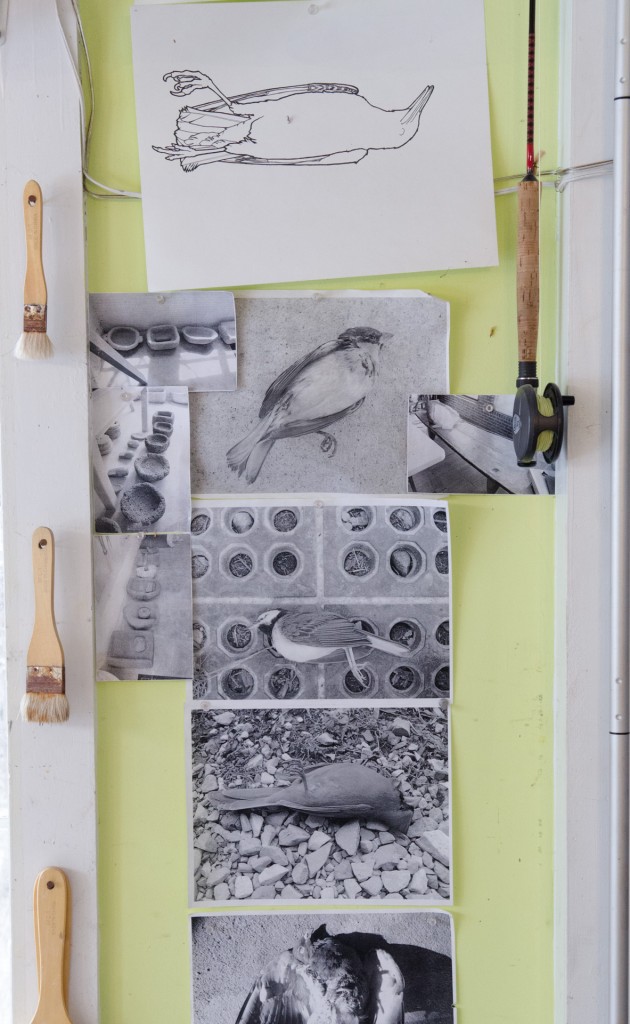 The resulting images on the vessels are casual and arresting: a fishhook, a frying pan. A turtle. A platter of turtles. Weird lures: a chair, a dead bird, an anatomically correct heart. “[The images] are everyday,” he says, “with a built-in plot. The user brings a story to it.” The drawings–the way they are drawn–evoke graphic novels, too. The objects feel removed from a panel, an “everyday” scene. Holding one of David’s cups, the image loses its primacy immediately to the feeling of the shape.
The resulting images on the vessels are casual and arresting: a fishhook, a frying pan. A turtle. A platter of turtles. Weird lures: a chair, a dead bird, an anatomically correct heart. “[The images] are everyday,” he says, “with a built-in plot. The user brings a story to it.” The drawings–the way they are drawn–evoke graphic novels, too. The objects feel removed from a panel, an “everyday” scene. Holding one of David’s cups, the image loses its primacy immediately to the feeling of the shape.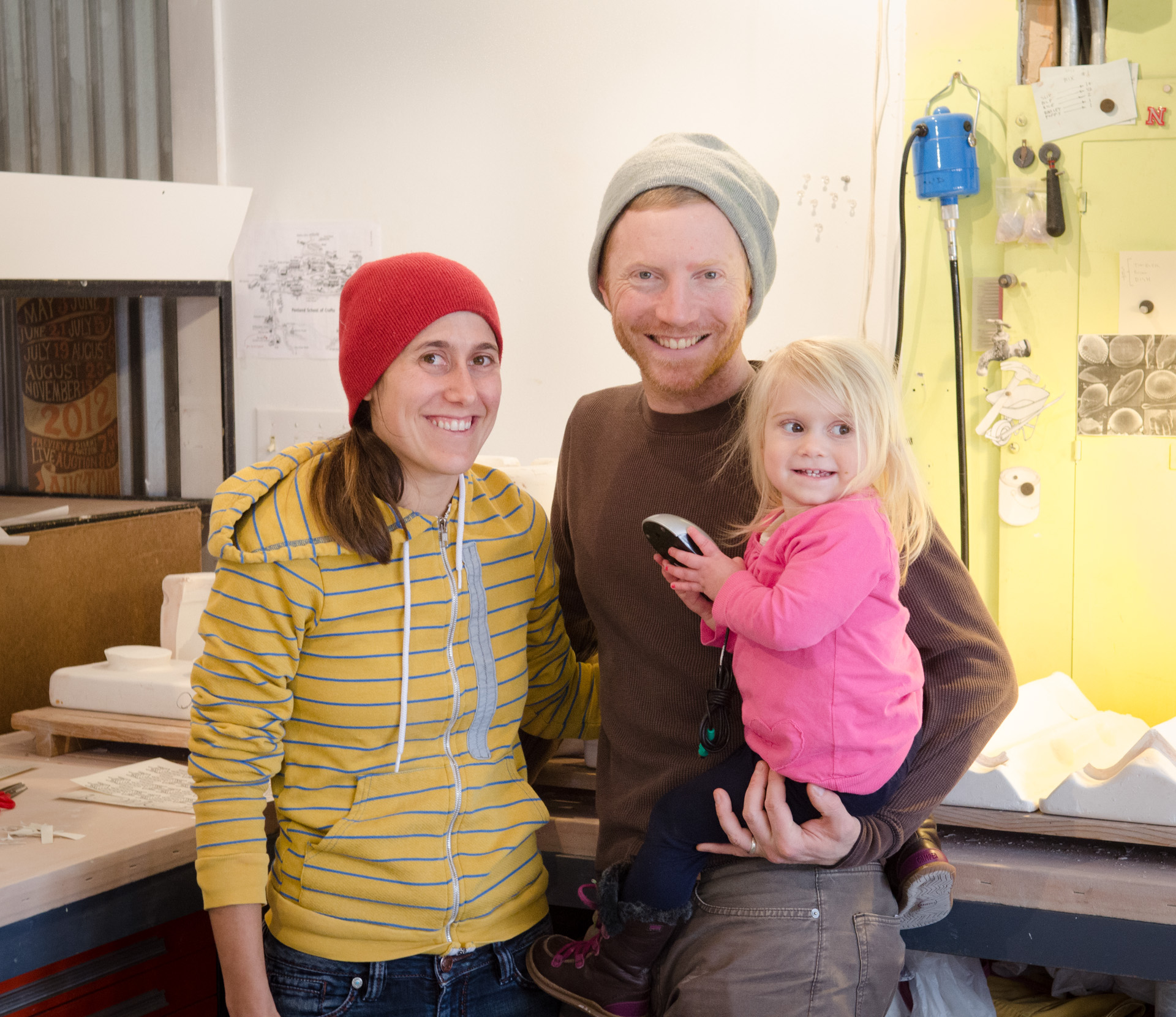 Both David and Elisa have worked a tricky balance the last three years: having a second child, creating their own work (David in residence, Elisa grabbing time in other studios), and working collaboratively on David’s pieces for the first time this winter. (“It’s Elisa’s turn next, David says, about the possibility of doing future residencies.) Their bread-and-butter studio collaboration will extend outward, too: David and Elisa plan to invite other clay artists, starting with Michael Klein, to make limited edition vessels with decals.
Both David and Elisa have worked a tricky balance the last three years: having a second child, creating their own work (David in residence, Elisa grabbing time in other studios), and working collaboratively on David’s pieces for the first time this winter. (“It’s Elisa’s turn next, David says, about the possibility of doing future residencies.) Their bread-and-butter studio collaboration will extend outward, too: David and Elisa plan to invite other clay artists, starting with Michael Klein, to make limited edition vessels with decals.